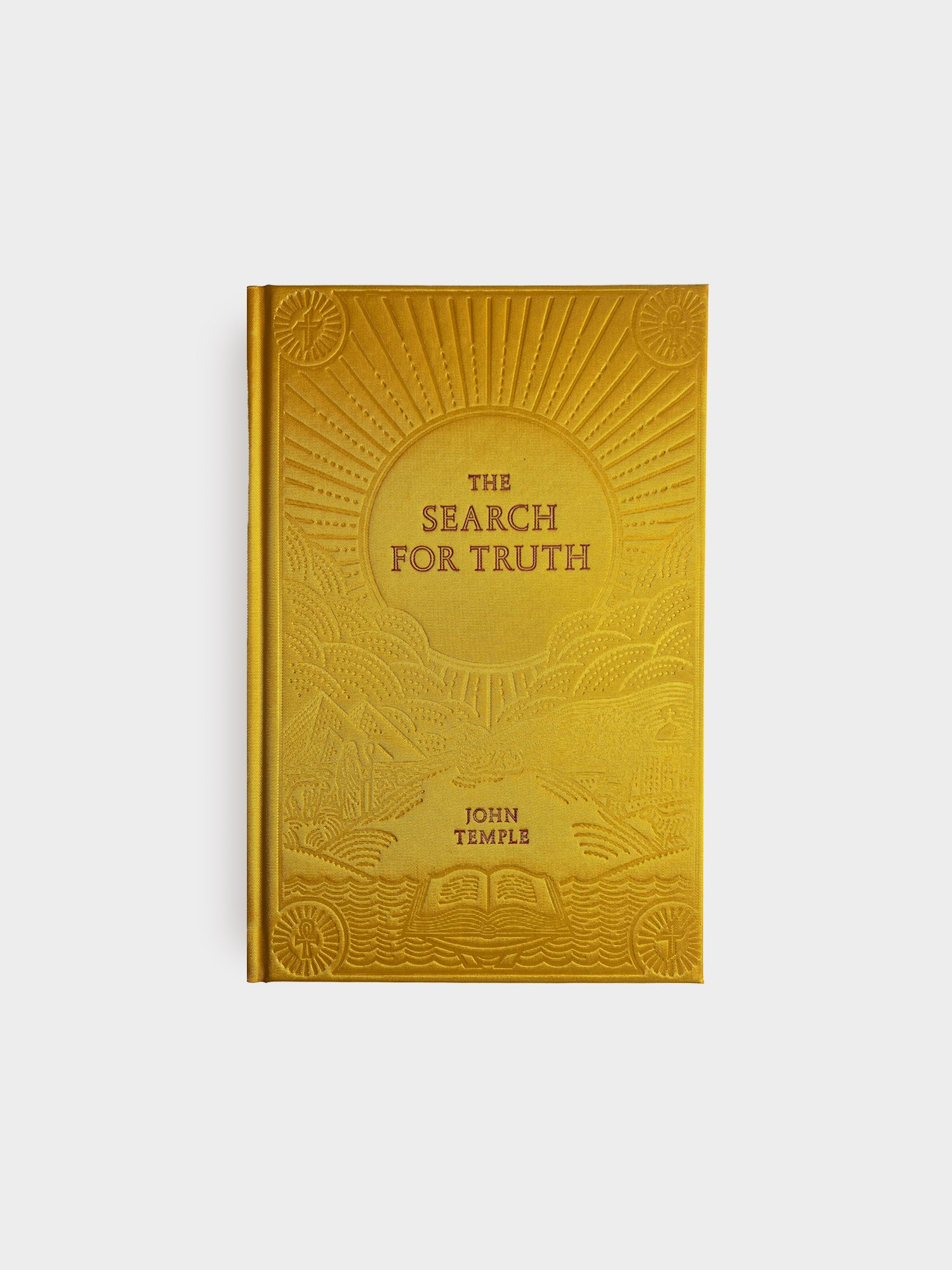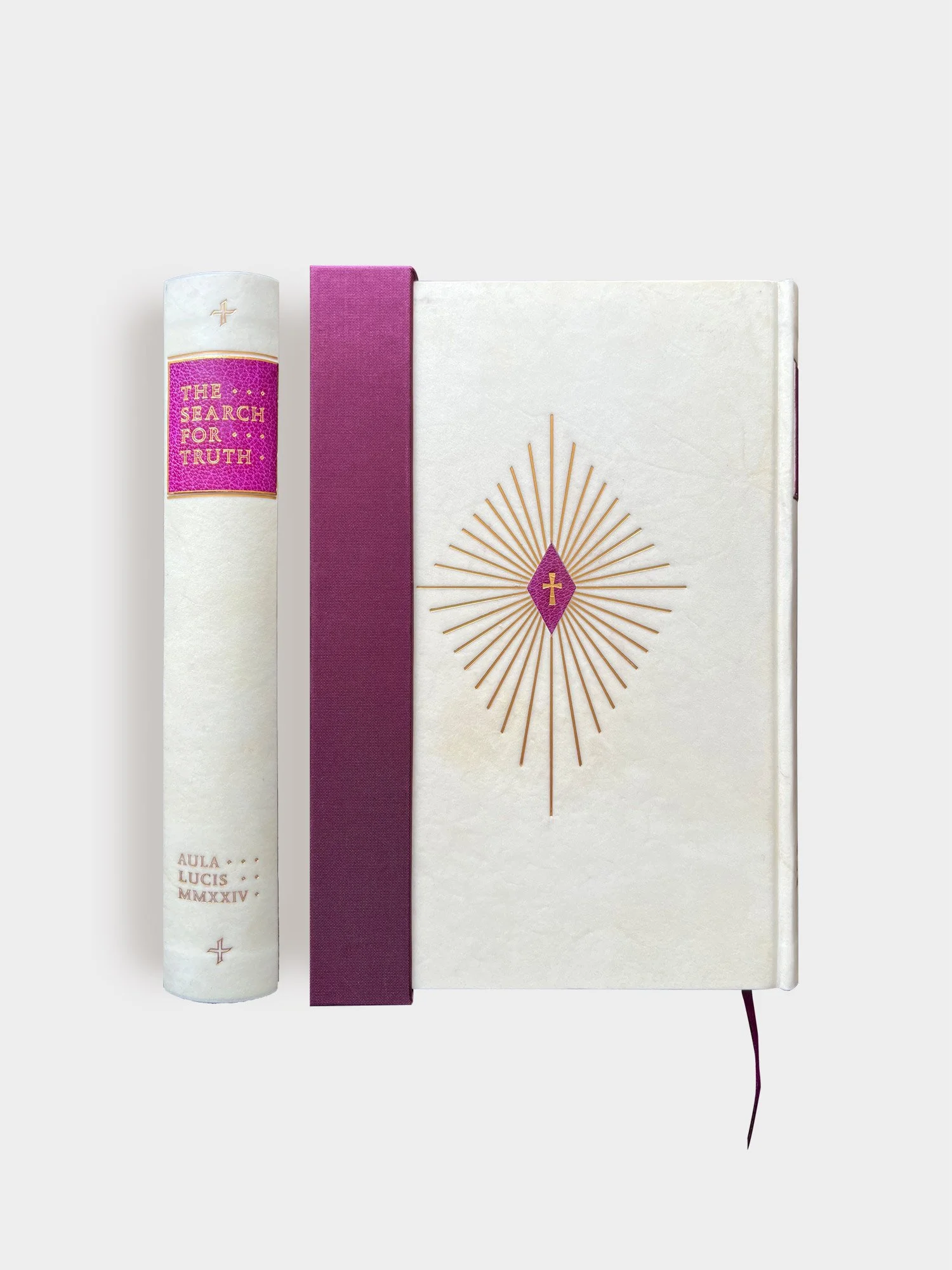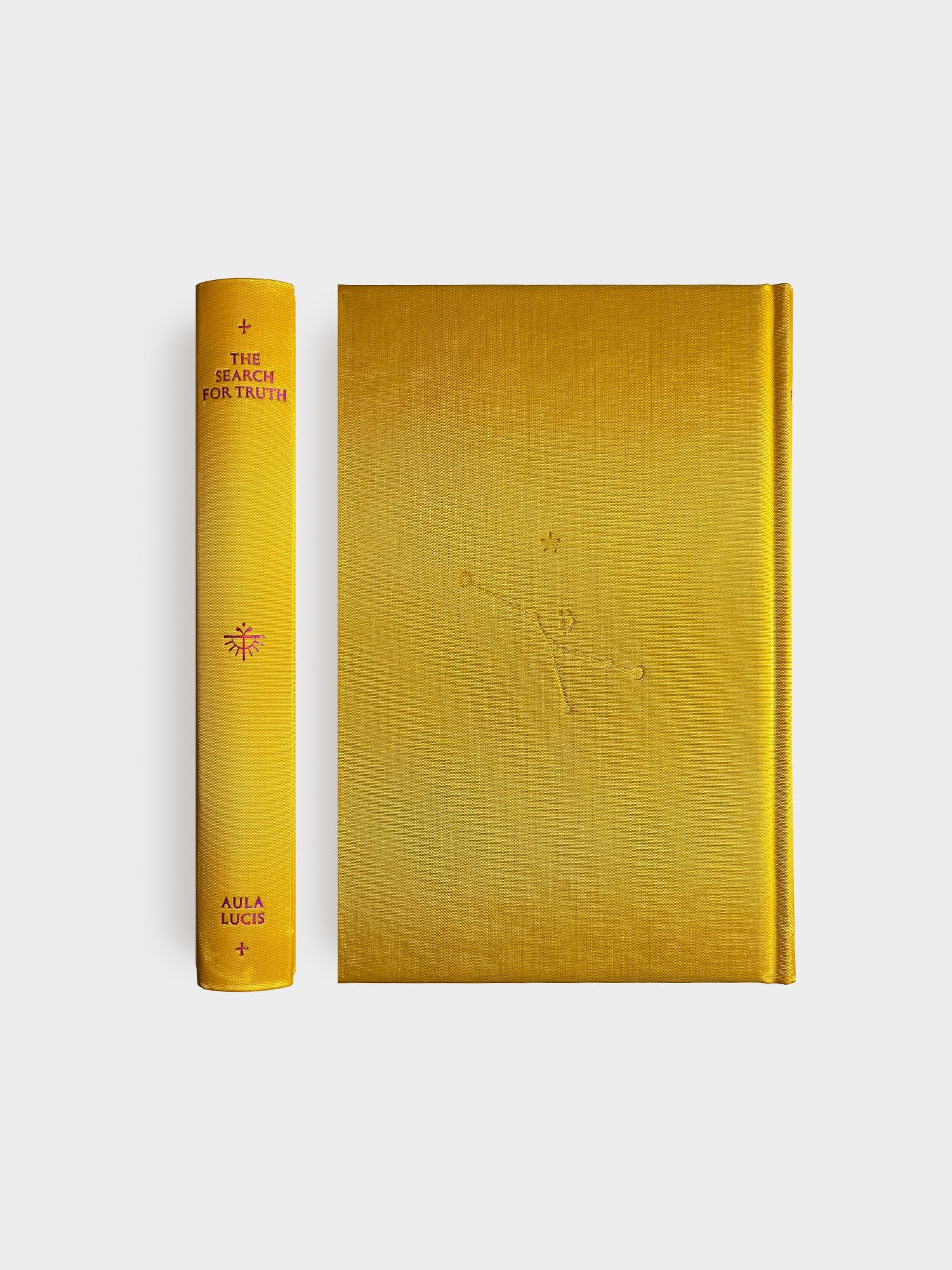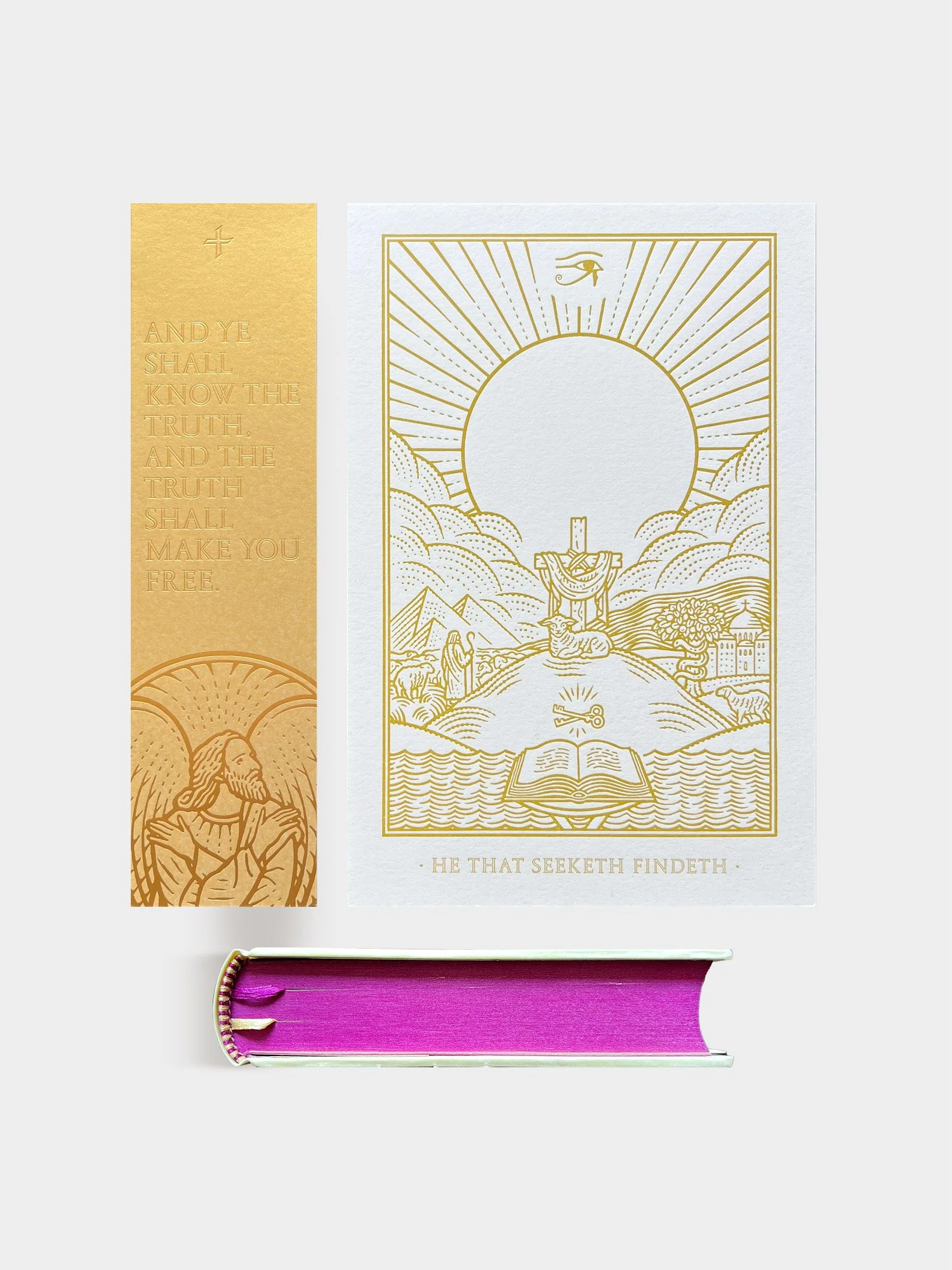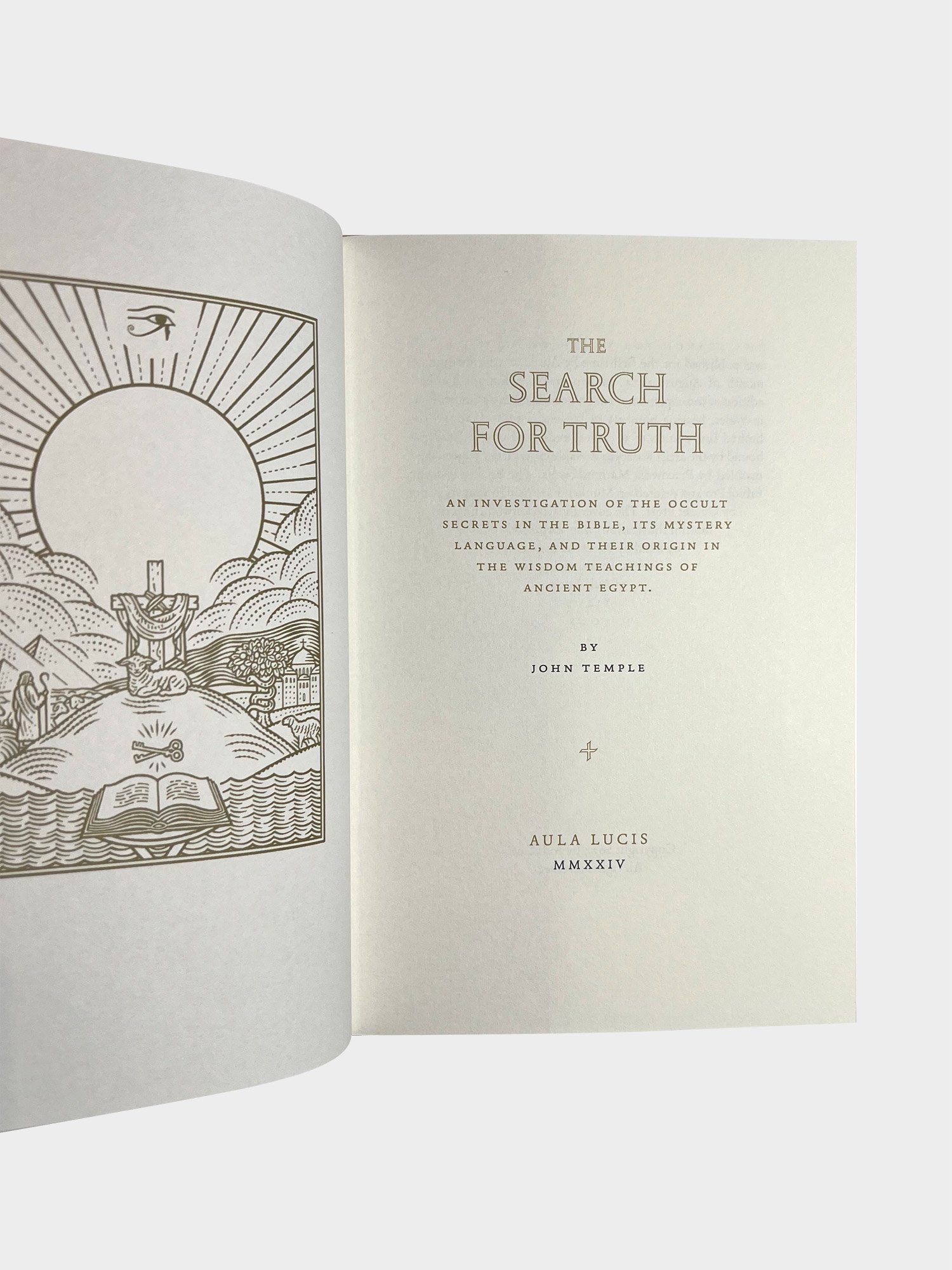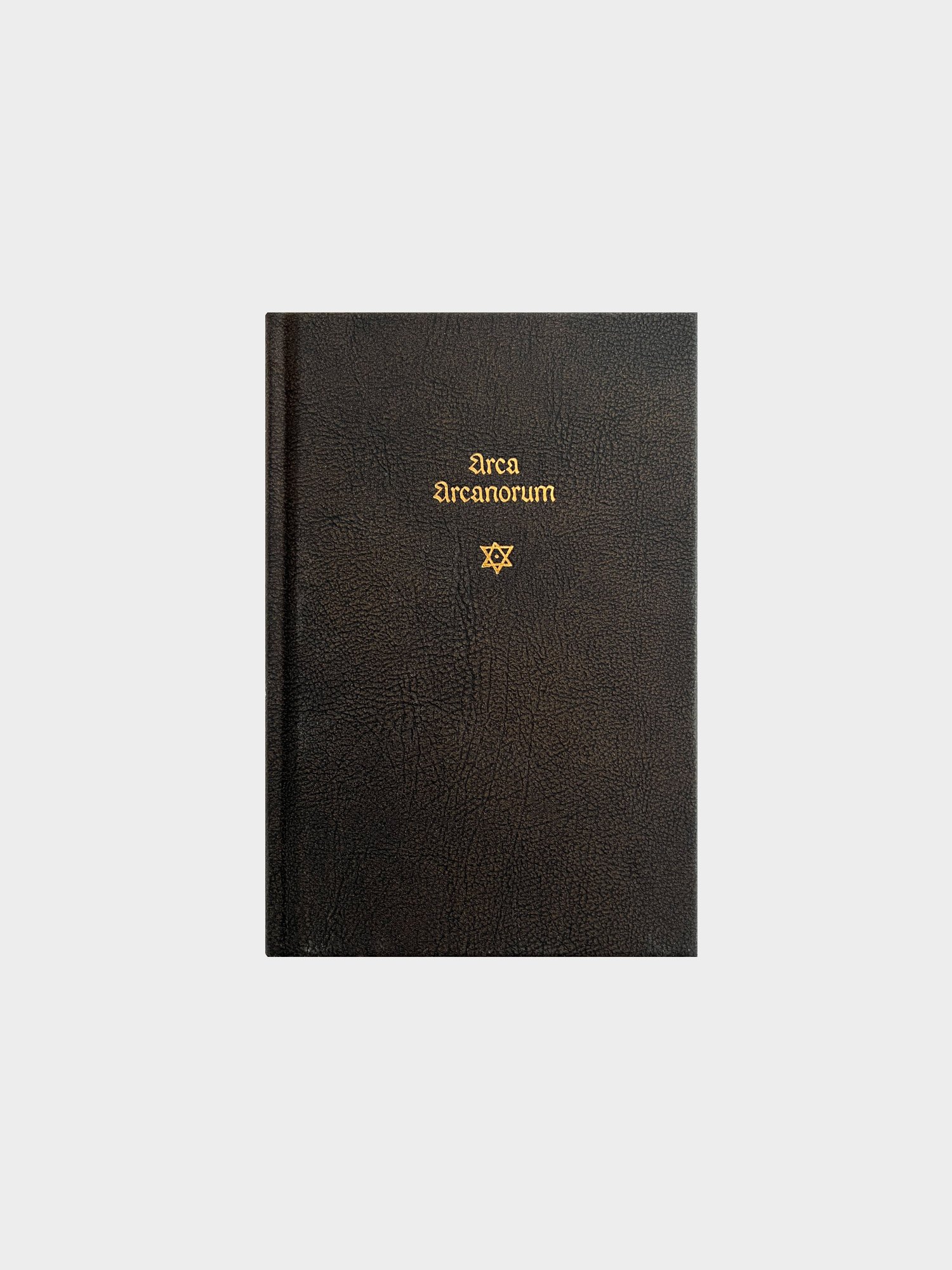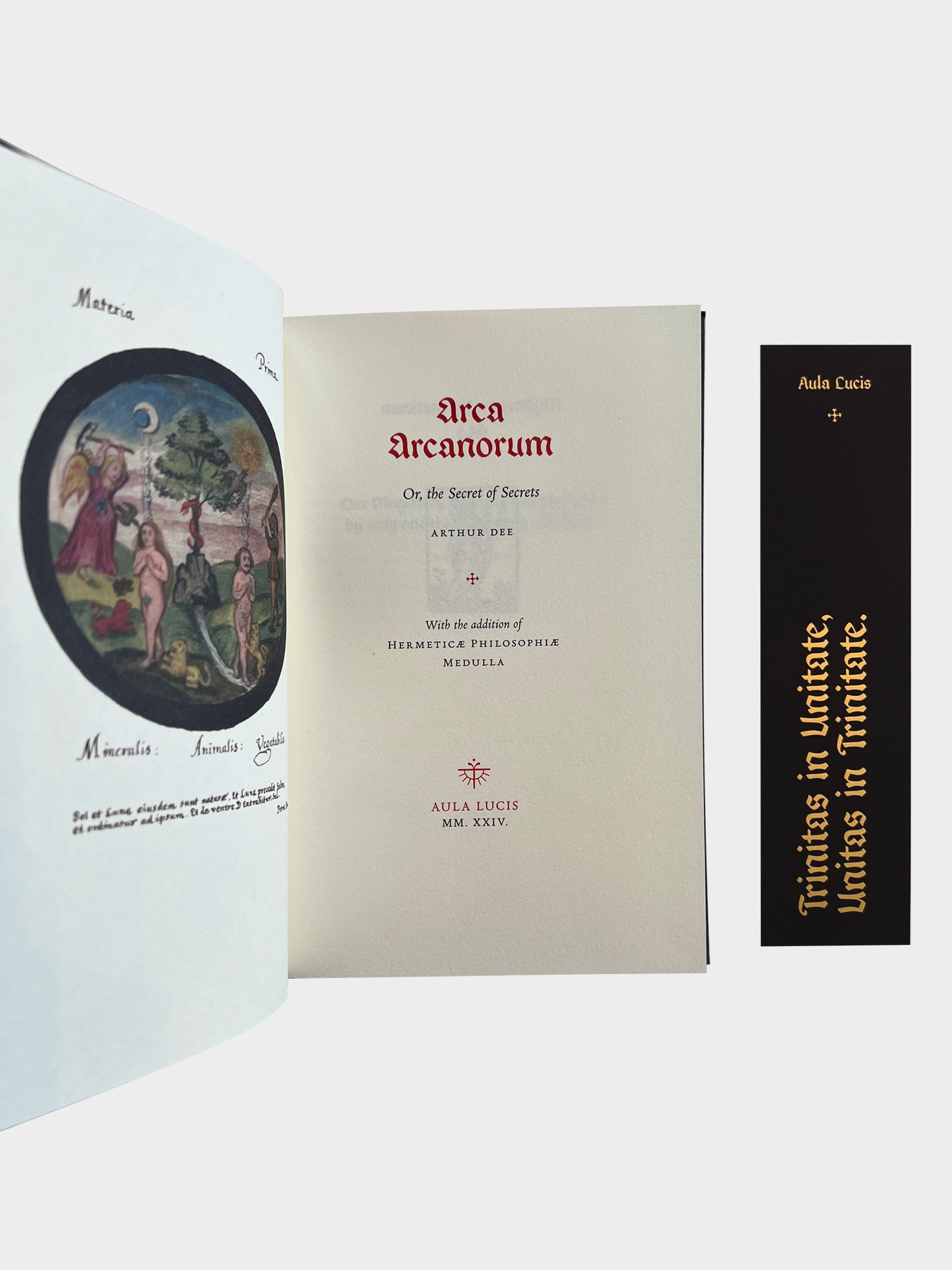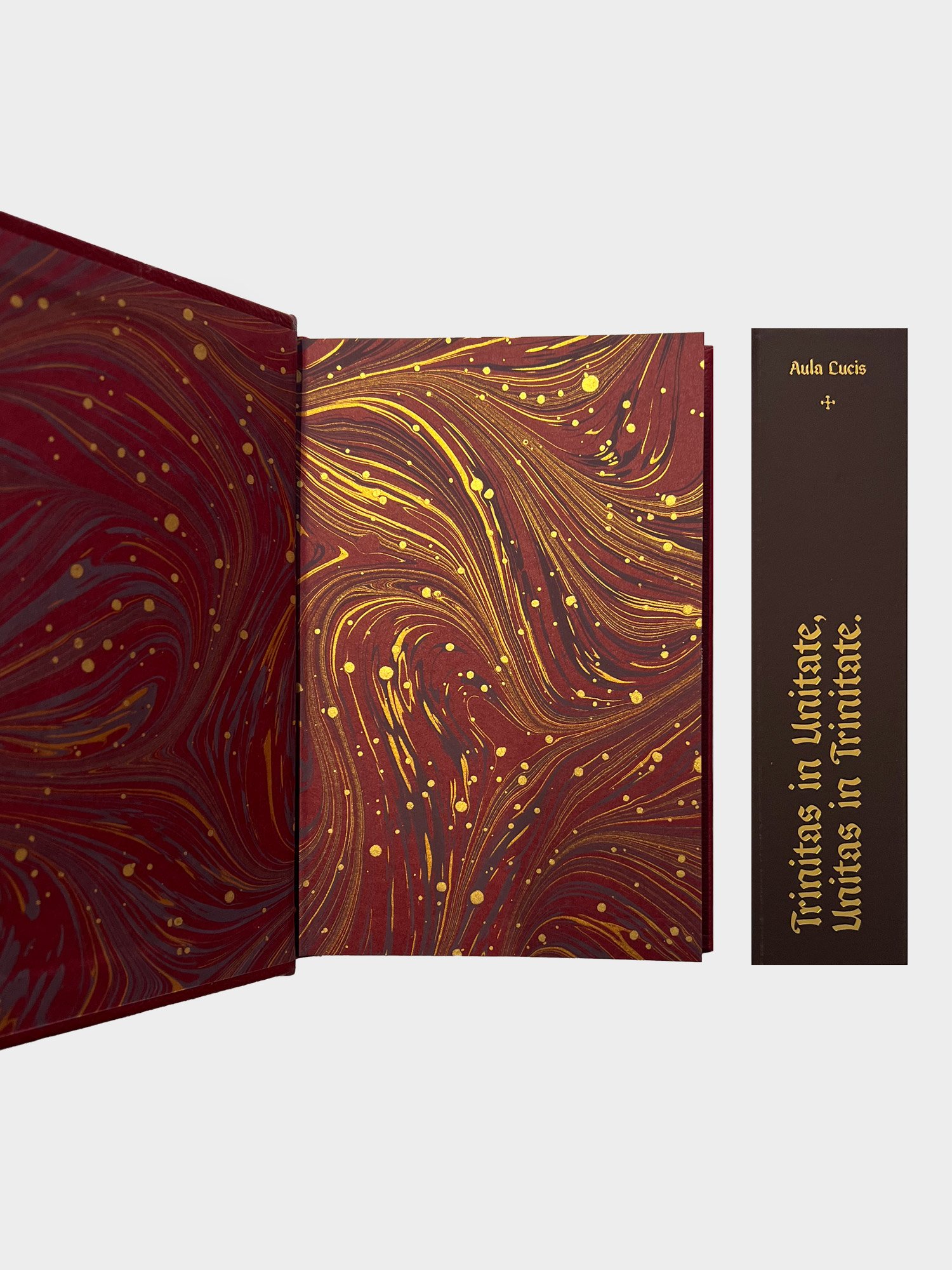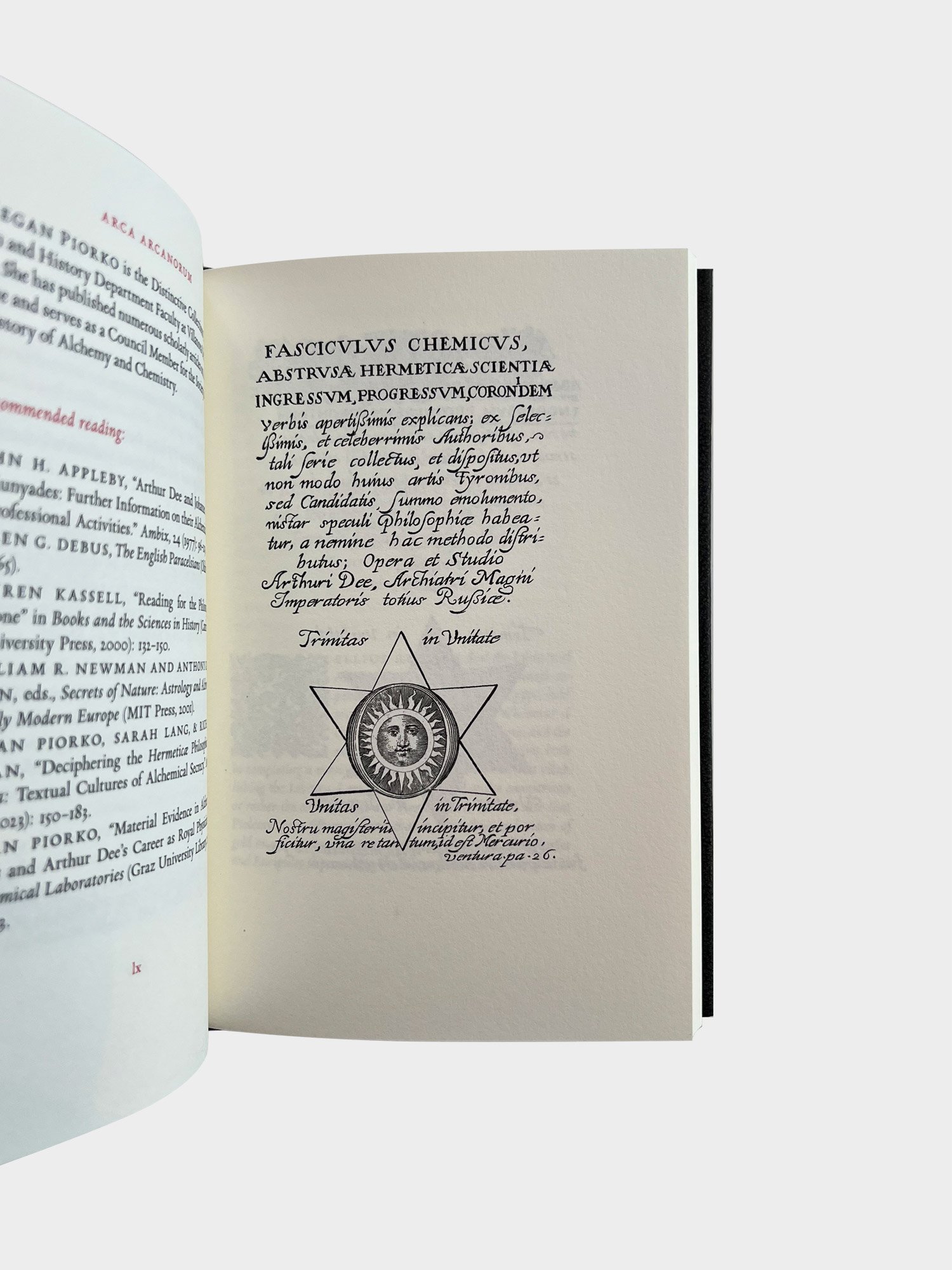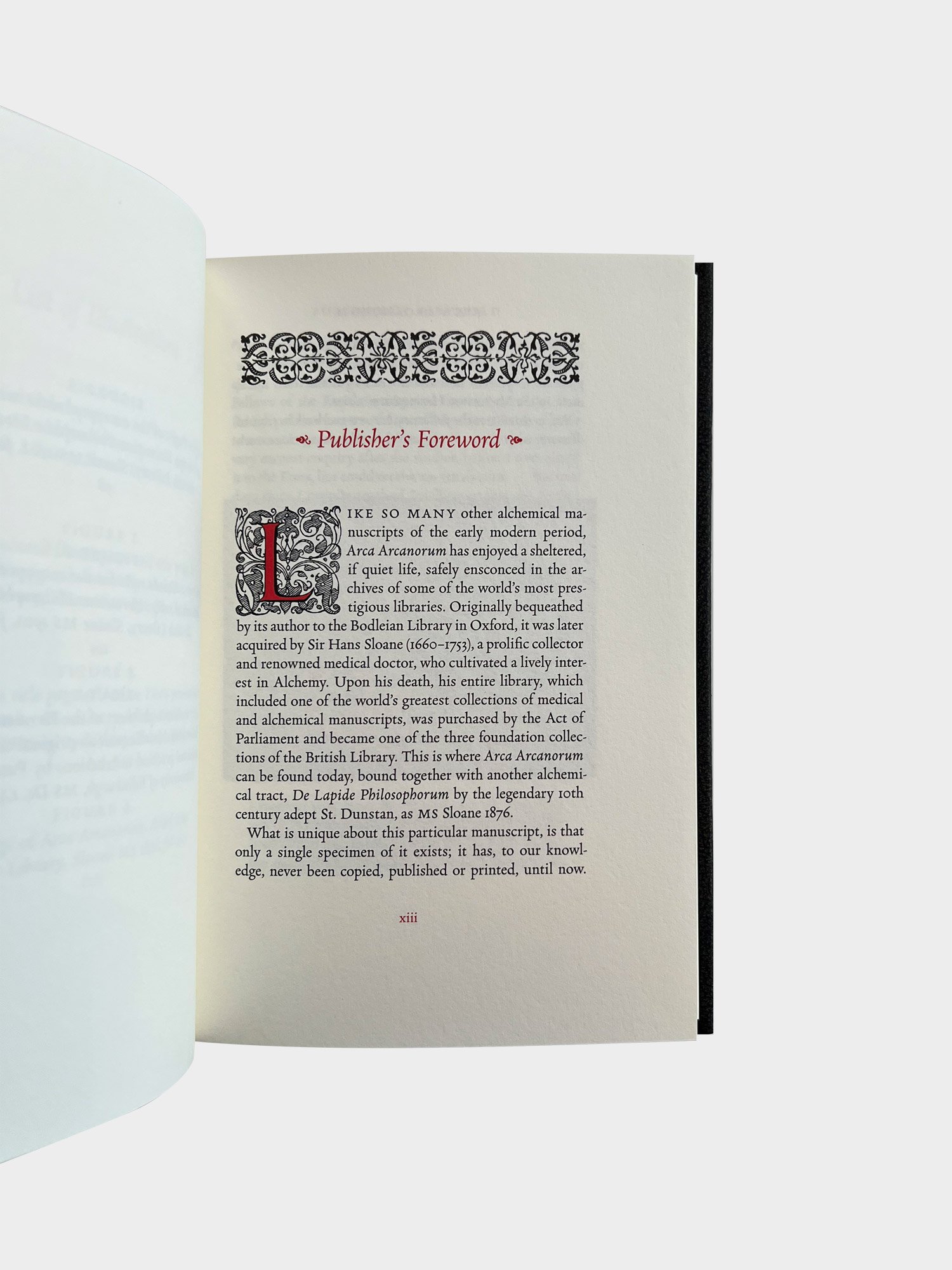-
Aula Lucis
Classic EditionHandbound in almond-coloured reconstituted leather, stamped in gold. Printed in duotone on Munken Pure Rough 100 gsm paper. Featuring dark brown endpapers, brown & oyster head & tail band and espresso-coloured silk ribbon. Presented with a white letterpress bookmark, stamped in gold.
Including seven duotone illustrations.
180 x 120 mm, 192 pp.
1st Edition, limited to 700 copies.
-
eucomply OÜ
Pärnu mnt 139b-14
11317 Tallinn, Estonia
hello@eucompliancepartner.com
www.eucompliancepartner.com*We ensure all our products comply with GPSR, CE marking, and other applicable EU Directives.
-
0. Classification: GPSR
1. Product Dimensions. 180 × 120 mm
2. Materials:
2.1 Interior Paper: Munken Pure Rough: FSC_C020637, PEFC_053399, EU Ecolabel, The paper is inspected for Nordic Ecolabelled printing , ECF, EMAS, Paper Profile, Safety of Toys, Food contact, Age resistant (ISO 9706), Woodfree, Cradle to Cradle Certified®, ISO 9001, ISO 50001
2.2 Cover Material: Winter & Company Wintan Vintage: Bonded leather fibres bio resin printed and embossed, base: Recycled leather fibres. ISO 3376 Tensile strength: MD 100 N / CD 90 N TAPPI T414 Tear resistance: MD 2680 mN / CD 2710 mN ISO 3376 Elongation: MD 2% /CD 3.6% ISO 105-X12 (Crockmeter) Colourfastness: MD 4-5 / CD 3-4 ISO 535 Cobb: 72 gsm. Reach compliant, PIW compliant, tested for harmful substances by Oeko-Tex, Leather standard 2017OK1025 AITEX.
3. Ink: Kingswood Inks High Quality Sheetfed Offset Ink - Globy Series
4. Printing Method: 4-Color Process Printing
5. Binding Method: Smyth Sewn
6. Country of Manufacturing (Printer and Binder): UK
7. Publisher: Between Friends Ltd., C/O Accountancy Partnership Twelve Quays House, Egerton Wharf, Wirral, CH41 1LD United Kingdom. info@betweenfriends.co.uk. +44 7538076526. UTR: 2353396141. Company registration number: 9171144
8. Manufacturer: Gomer Press Ltd, Llandysul Enterprise Park, Llandysul, Ceredigion SA44 4JL. tel : 01559 362371. email: sales@gomer.co.uk. Company registration number : 429329. VAT Number : 122 0971 04
9. EU Yearly Warranty: non-applicable
10. Age restrictions: For adults
11. Merchant: Anathema Publishing Ltd. (Les publications Anathema Ltée.): 228 rue du Prado, Gatineau, J9J 0M2, Quebec, Canada / Tel: 514-910-3357 / info@anathemapublishing.com / https://www.anathemapublishing.com/ / Business Number(s): Federal: 721230894 Provincial: 1172612724
-
Books are generally safe objects, however, here are some key hazards and risks potentially associated with books:
1. Physical Injury
- Paper cuts: Paper edges may cause minor cuts when mishandled.
- Falling books: Large or heavy books can cause injury if they fall from certain heights.
2. Health Risks
- No definite health risks associated with modern (i.e. more recent) books.
3. Fire Hazard
- Flammability: Books are made of paper and can catch fire near heat sources or flames.
4. Choking Hazard (for children)
- Small parts: Bookmarks, paper clips, or detachable parts can pose a choking risk for young children.
5. Ergonomic Risks
- Strain injuries: Prolonged reading in poor posture or holding heavy books may cause strain or injury.
6. Eye Strain
- Poor lighting or close reading: Reading in dim light or holding a book too close can cause eye fatigue or strain.
Description
¶ For the fourth volume in the Mysterium Hermeticum series we have brought together a pair of treatises which are unique in the history of alchemical literature. Lumen de Lumine and Aula Lucis were meant to be published in one book, about the year 1651. Why this intended design did not come to fruition, Thomas Willard expounds in his excellent introductory essay. What is certain is that both of these tracts offer a profound insight into the Alchemy of Light and the Mysterium Magnum itself: the Prima Materia. It is therefore our pleasure to join together in one volume what was once put asunder, and thus honour the original design of the author, of whom we shall speak presently.
¶ Next to Robert Fludd, the Welsh alchemist Thomas Vaughan (1621–1666), also known as Eugenius Philalethes, has been widely regarded as Britain’s most notable 17th century occultist and alchemical writer. He is believed to be one of the most profound and perhaps most recondite of all visionaries who have seen “the new East beyond the stars.” His magical and alchemical writings, published in the 1650s, established him as a leading interpreter of the Secret Tradition in his time. Aside from being a passionate exponent of alchemy, Vaughan was a mystical philosopher and a visionary largely influenced by the Rosicrucian movement of the 17th century. He translated and published the first English edition of the Rosicrucian Manifestos, Fama and Confessio Fraternitatis, alongside many of their lesser known works, such as “A Letter from the Brothers of R.C. Concerning the Invisible, Magical Mountain, & the Treasure therein Contained,” which he inserted into Lumen de Lumine.
¶ Far from being only a speculative philosopher, Vaughan was also a practising alchemist whose penetrating insight into the mysteries of Nature was tried and tested in the light of laboratory experience. Thus in Lumen de Lumine, by means of an allegoric dream-vision, he introduces the reader to the secret School of Magic in which Thalia—the spirit of Nature—unfolds before the alchemist the cascade of First Matter and its various mineral and metallic generations. These are symbolically represented by the engraved Emblem of the School, created by the celebrated 17th-century artist Robert Vaughan and reproduced in the book. Following this, Vaughan adds eleven short essays, ranging in length from four sentences to fourteen small pages of text. All concern aspects of the alchemical work in both the practical sense—from the First Matter to the projection—and in the expanded sense including Magic and Cabala. The “Magical Aphorisms of Eugenius” which follow are elucidated in a commentary written exclusively for this edition by Prof. Thomas Willard.
¶ “I have resolved with myself to discourse of Light, and to deliver it over to posterity,” writes Thomas Vaughan in the opening lines of Aula Lucis. In this luminous essay, which follows chronologically after Lumen de Lumine, he explains what the descent of Light into Matter truly means for anyone who wishes to have a better understanding of Nature, and especially for the prospective alchemist. At its heart, his thesis concerns not only the regeneration of metals, but the spiritual transmutation of Man. He writes: “He that desires to be happy, let him look after Light, for it is the Cause of Happiness, both temporal and eternal. In the House thereof it may be found, and the House is not far off nor hard to find, for the Light walks in before us and is the Guide to his own habitation.” We invite our readers to follow us on this journey into the House of Light, where our quest for the First Matter of the Philosophers shall continue in earnest.








